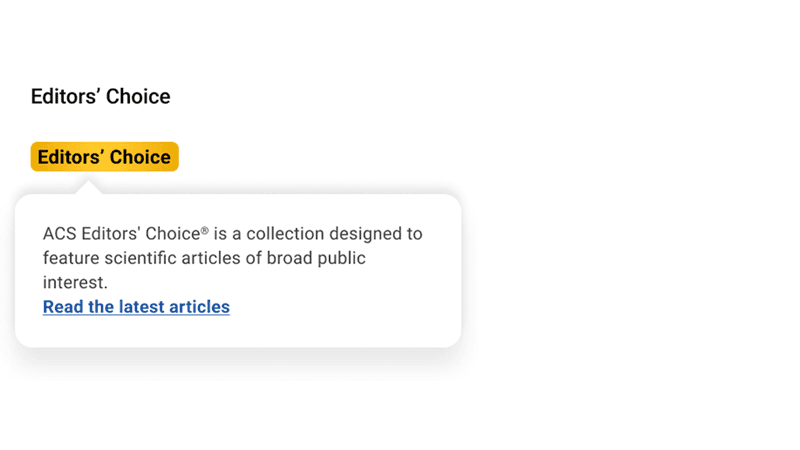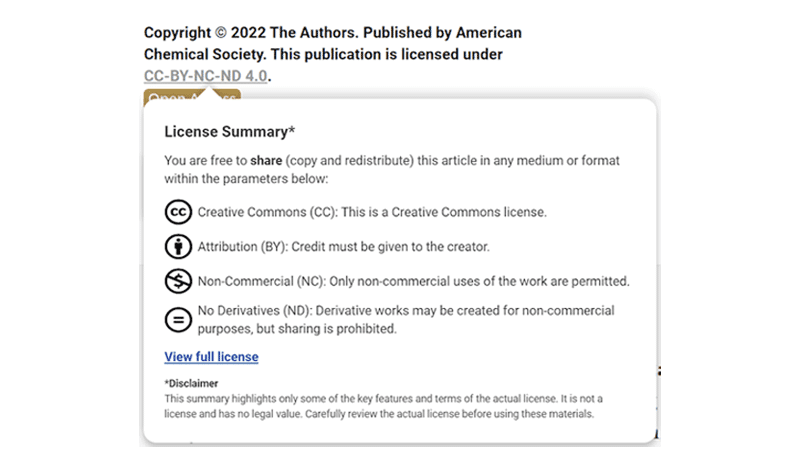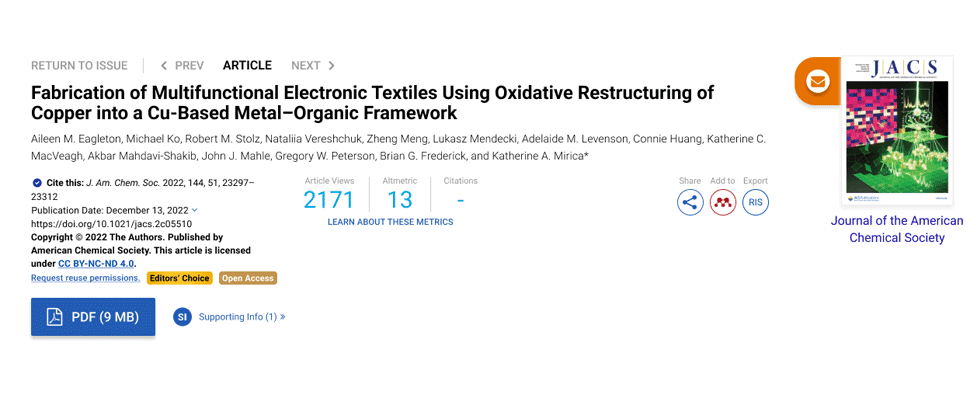We've now made it easier for readers to know what content they can access, and what they can do with that access.

Recent changes across all ACS journals now make it easier than ever to identify content to which readers have access and what they are permitted to do with that content. Readers who visit pubs.acs.org to consume journal, book, and news content will notice a variety of new icons in headers that identify content that is available to them in full text and what permissions govern their use of that content.
Understanding Availability
Readers of ACS Publications may have access to content for a variety of reasons. Their organization may have a subscription, the article may be free to read for a duration, or the authors may have chosen to publish it under an open access license. Each access method affords readers different permissions regarding what they can legally do with that content.
Below are the most common access indicator labels readers will find within ACS articles and sample tooltips that explain what they mean.

When an article is offered under a special program, such as ACS Editors’ Choice, that program will now be indicated visually in the header of the article.

Easy to Understand Permissions
The world of scientific publishing is evolving rapidly with the growth of open access and as such article permissions vary greatly by license. Some articles feature licenses that allow those with access to do anything they want with the article, including making derivative works of it and selling it commercially. Use of other articles are regulated by more strict licenses that might only permit reading and citation of the work.
In addition to adding features that make it clear to readers what content is accessible, we want it to be easy for readers to know what they can do with an article. Each article header, regardless of whether a reader is viewing a list of articles or a single article in full-text, features a clear indication of the license associated with the article and a handy “plain language” tooltip explaining what permissions are afforded.

Easy to Request Additional Permissions
For articles that are not open access, a link can be found atop the article for readers to request additional permissions through Copyright Clearance Center. Readers may want to use this option when they want to share an article with a person who does not have licensed access, such as someone affiliated with another company or university. They may also use this option to gain bulk permissions for redistribution, such as distributing articles to physicians as part of a sales pitch for a new drug.
Creative Commons as the Standard License for Open Access
ACS has empowered authors to publish Open Access for over a decade. Our previous open access program —ACS AuthorChoice—is being phased out in favor of the industry standard Creative Commons open access licenses.
Creative Commons licenses are used and recognized across the spectrum of research publishing, with a variety of options meeting the requirements set out in the open access policies of most research funders and institutions. ACS previously enabled authors to select these licenses through the AuthorChoice program, but it was not immediately obvious to readers that AuthorChoice was synonymous with open access—especially in cases where readers may be more familiar with the way open access articles are denoted on other publishing platforms.
All open access articles published in ACS journals now include a clear ‘Open Access’ icon in place of the AuthorChoice badge, and provide additional information about the Creative Commons license (and associated reuse permissions) under which the work has been published (as pictured below).

These changes make it easier for readers to identify which articles they can access and understand how they can be reused to spark the next generation of scientific discoveries.

License information is also included at the end of the article abstract on the ACS Publications website, making it clearer how readers can continue to access the most relevant research to them without needing to search through the page for information.
